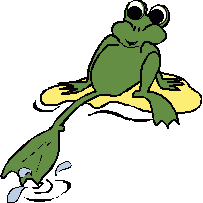What Does an Environmental Analyst Do?
Amanda Asked NIEHS .....
What does an
Environmental Analyst do?
This is a letter from Dr. Jim Burkhart of NIEHS to one of our website visitors who asked about a career as an Environmental Analyst:
Hello Amanda,
My name is Jim Burkhart and I am a scientist here at the National Institute of Environmental Health Sciences. I was asked to respond to your question because some folks thought that what I do seems to fit the bill for an "environmental analyst." In my mind an "environmental analyst" is a scientist who asks questions about what is going on in the environment, either to develop an understanding of how things work (like weather and water currents), or to learn what may be changing in relationship to something else (like fish, frogs, plants and people). Maybe an explanation of some of the work I am involved in can serve as an example.
A couple of years ago children in Minnesota found some frogs that had either extra legs or missing legs. (Read more about Frog deformities) This discovery of course caused quite a stir in the newspapers. As scientists, one of our first questions was: "Is this really something new or have the kids just found an isolated group."
So we had to run field experiments with scientists from Minnesota to look carefully at large groups of frogs from many places up there. Turns out, there are more malformed frogs than there should be. The next question is why? This isn't a simple question, because we already know of many things that can cause malformations.
Examples include genetics, loss of limbs to things like fish, infections, UV radiation and exposure to both natural and manmade substances. We have examined many malformed animals with X-ray and found that, at least in Minnesota, the bones are actually abnormal which leads us to consider that its probably not genetics, bites, and infections. We are now working to find out what else might be going on.
This consists of identifying and measuring many things in the water and mud of places with bad frogs, and comparing what's;
there to places with no bad frogs. We hope that in that way, we can find out what is different and thereby determine the cause. This is an "environmental analysis", so maybe that makes me and environmental "analyst" with respect to frogs!
I hope this helps some. If you need more specifics let me know.
Regards,
Jim Burkhart Ph.D.
Head Alternative Systems Group
Environmental Toxicology Program
National Institute of Environmental Health Science
You can learn more about other types of "environmental" science careers,
and learn more about NIEHS' work and the NIEHS work environment at: Get Your Own Lab-Coat.







